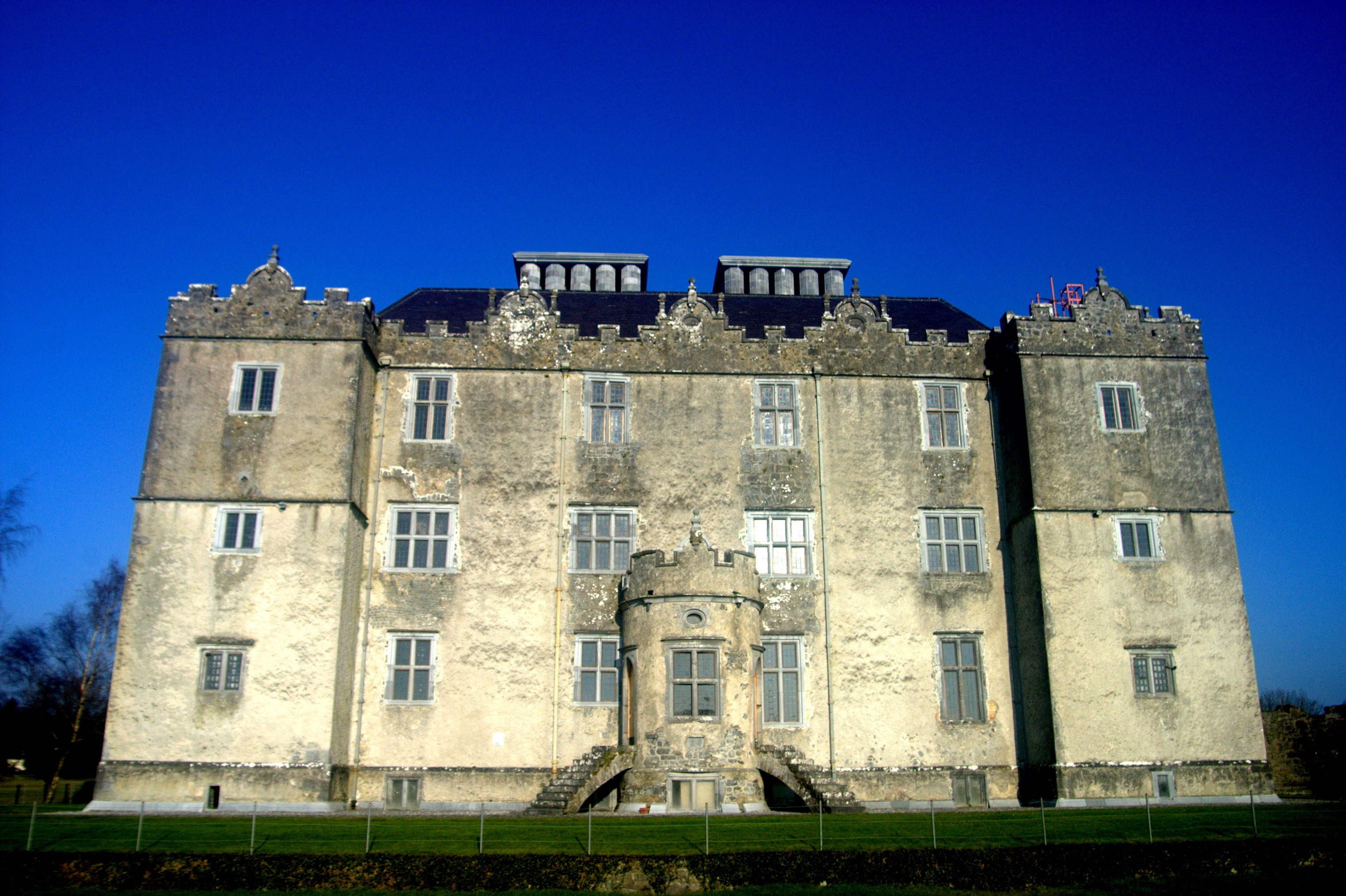Fortified houses in Ireland on:
[Wikipedia]
[Google]
[Amazon]

 In
In
The Fortified Houses of County Cork: Origin, fabric, form, function and social space
, ''The Proceedings of the 2006 Association of Young Irish Archaeologists conference'', pp. 65–75.
The Fortified House: A Review
{{DEFAULTSORT:Fortified House Architecture in the Republic of Ireland 16th-century architecture Fortifications in Ireland Fortified houses de:Festes Haus fr:Maison forte

 In
In Ireland
Ireland ( ; ga, Éire ; Ulster Scots dialect, Ulster-Scots: ) is an island in the Atlantic Ocean, North Atlantic Ocean, in Northwestern Europe, north-western Europe. It is separated from Great Britain to its east by the North Channel (Grea ...
at the end of the sixteenth and beginning of the seventeenth century, the fortified house (), along with the stronghouse, developed as a replacement for the tower house
A tower house is a particular type of stone structure, built for defensive purposes as well as habitation. Tower houses began to appear in the Middle Ages, especially in mountainous or limited access areas, in order to command and defend strateg ...
. 'Fortified Houses' were often rectangular, or sometimes U or L-shaped, three-storey structures with high gables and chimney stacks and large windows with hood mould
In architecture, a hood mould, hood, label mould (from Latin ''labia'', lip), drip mould or dripstone, is an external moulded projection from a wall over an opening to throw off rainwater, historically often in form of a ''pediment''. This mouldin ...
ings. Some examples have square towers at the corners. The interiors were relatively spacious with wooden partitions and numerous fireplaces. In a number of cases 'Fortified Houses' were built onto pre-existing tower houses. 'Fortified Houses' were protected by gun fire from the angle towers and bartizan
A bartizan (an alteration of ''bratticing''), also called a guerite, ''garita'', or ''échauguette'', or spelled bartisan, is an overhanging, wall-mounted turret projecting from the walls of late medieval and early-modern fortifications from th ...
s, and were also provided with bawn walls with gunloop
An embrasure (or crenel or crenelle; sometimes called gunhole in the domain of gunpowder-era architecture) is the opening in a battlement between two raised solid portions (merlons). Alternatively, an embrasure can be a space hollowed out ...
s, towers and protected gateways. 'Fortified Houses' were built throughout Ireland by large landowners from a variety of backgrounds, such as the Old English
Old English (, ), or Anglo-Saxon, is the earliest recorded form of the English language, spoken in England and southern and eastern Scotland in the early Middle Ages. It was brought to Great Britain by Anglo-Saxon settlers in the mid-5th c ...
Earl of Clanricarde
Earl of Clanricarde (; ) is a title that has been created twice in the Peerage of Ireland, first in 1543 and again in 1800. The former creation became extinct in 1916 while the 1800 creation is extant and held by the Marquess of Sligo since 191 ...
who built Portumna Castle
Portumna Castle is a semi-fortified house in Portumna, County Galway, Ireland which was built in the early 17th century by Richard Burke, 4th Earl of Clanricarde.
Location
Portumna Castle is located close to the shore of Lough Derg near whe ...
in County Galway; Gaelic lords such as MacDonogh MacCarthy, Lord of Duhallow
Duhallow () is a barony located in the north-western part of County Cork, Ireland.
Legal context
Baronies were created after the Norman invasion of Ireland as divisions of counties and were used in the administration of justice and the raisin ...
, who built Kanturk Castle in County Cork
County Cork ( ga, Contae Chorcaí) is the largest and the southernmost county of Ireland, named after the city of Cork, the state's second-largest city. It is in the province of Munster and the Southern Region. Its largest market towns a ...
; and Cromwellian
Oliver Cromwell (25 April 15993 September 1658) was an English politician and military officer who is widely regarded as one of the most important statesmen in History of England, English history. He came to prominence during the 1639 to 1651 ...
soldiers such as Sir Charles Coote, who built Rush Hall in County Offaly.
Examples
* Athlumney Castle, Navan * Burncourt Castle, County Tipperary * Coolhull Castle, County Wexford * Dromaneen Castle, County Cork * The Mint, Carlingford, County Louth *Portumna Castle
Portumna Castle is a semi-fortified house in Portumna, County Galway, Ireland which was built in the early 17th century by Richard Burke, 4th Earl of Clanricarde.
Location
Portumna Castle is located close to the shore of Lough Derg near whe ...
, County Galway
* Robertstown Castle, County Meath
* Saint David's Castle, Naas
* Terryglass Castle, County Tipperary
See also
*Tower house
A tower house is a particular type of stone structure, built for defensive purposes as well as habitation. Tower houses began to appear in the Middle Ages, especially in mountainous or limited access areas, in order to command and defend strateg ...
*Manor house
A manor house was historically the main residence of the lord of the manor. The house formed the administrative centre of a manor in the European feudal system; within its great hall were held the lord's manorial courts, communal meals w ...
References
*Joe Nunan (2006)The Fortified Houses of County Cork: Origin, fabric, form, function and social space
, ''The Proceedings of the 2006 Association of Young Irish Archaeologists conference'', pp. 65–75.
External links
The Fortified House: A Review
{{DEFAULTSORT:Fortified House Architecture in the Republic of Ireland 16th-century architecture Fortifications in Ireland Fortified houses de:Festes Haus fr:Maison forte